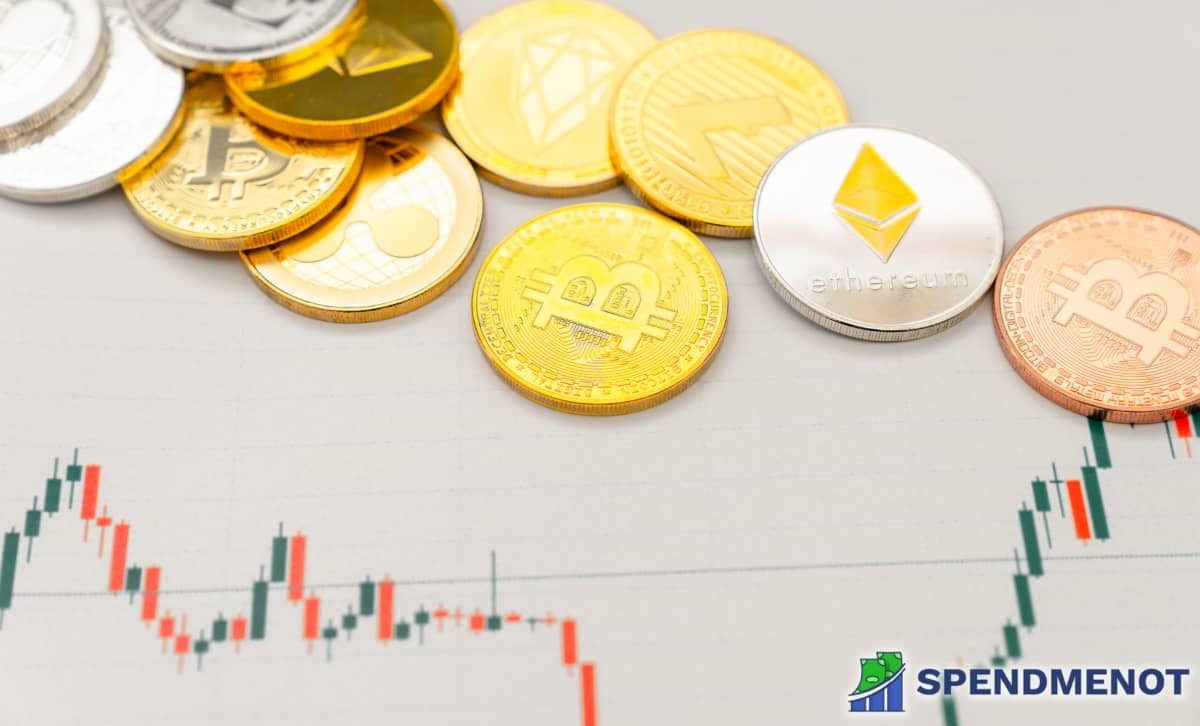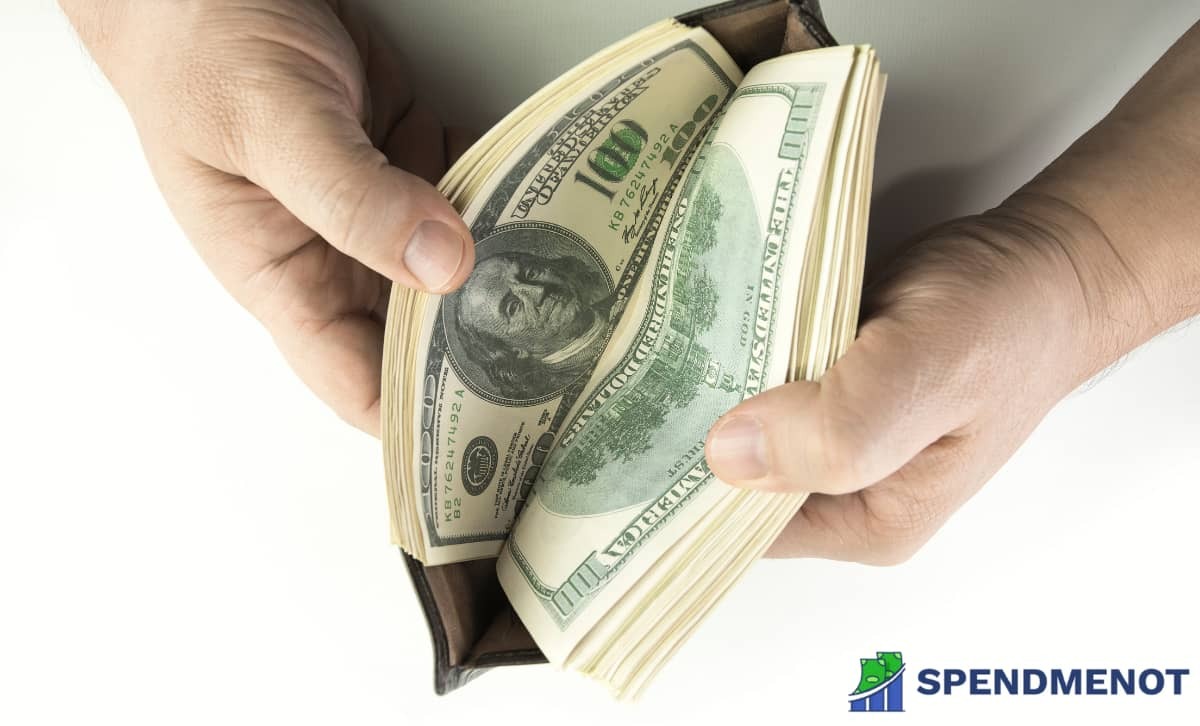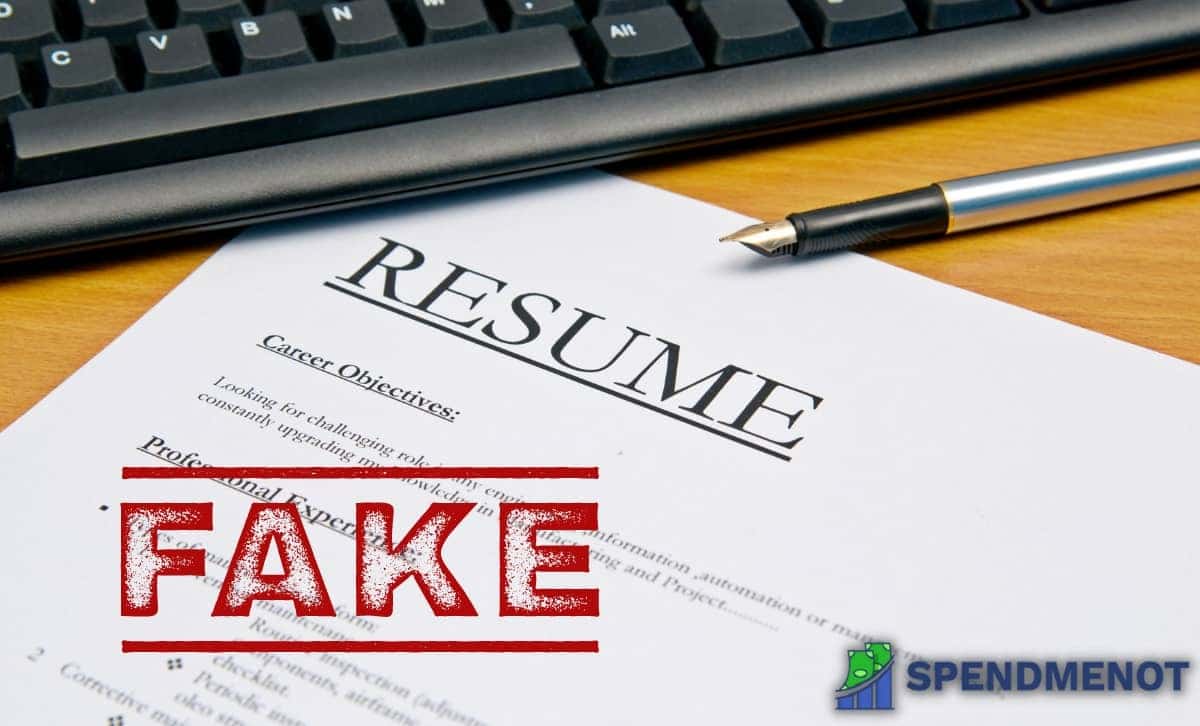How Many Americans Live Paycheck to Paycheck?
Last Updated: September 18, 2022
What is living paycheck to paycheck? This can be described as a situation where your monthly income is enough to cover basic needs such as rent, food, and other monthly bills. Typically, these expenses gobble up most of the pay packet, leaving no room to save and make strategic financial moves.
The idea of an emergency occurring is one most Americans living from paycheck to paycheck cannot fathom. If one keeps looking at their calendar and has bookmarked the next payday, then a hospital bill running into hundreds of dollars is the last expense they want on their plate.
So how many Americans live paycheck to paycheck?
US Paycheck to Paycheck Statistics (Editor’s Choice)
- More than 6 in 10 Americans live from paycheck to paycheck.
- Almost half of Americans earning more than $100k report living from paycheck to paycheck.
- 25% of Americans don’t have enough savings to cover a $400 emergency.
Moreover, 30% of Americans skip medical treatment due to cost, while 66% of millennials are likely to say that a personal healthcare-related bill caused them to spend a large chunk of their savings at some point in their adult life. And 70% of millennials are also likely to say that a healthcare-related bill has prevented them from making other payments — more than any other group.
Ready for more interesting statistics?
1. 64% of Americans live from paycheck to paycheck.
(Source: OnePoll & Amerilife, Lending Club Payments.com)
According to a recent survey conducted by OnePoll and AmeriLife, 63% of American adults don’t foresee themselves reaching a level of financial security that will allow them to live comfortably.
This echoes the findings of a Lending Club study that observes that 64% of American adults reported living from paycheck to paycheck in January 2022. This represented a 6% increase from December 2021.
2. 48% of US adults earning more than $100k per year report living from paycheck to paycheck.
(Source: Lending Club & Payments.com)
The number of Americans earning more than $100,000 per year who report living from paycheck to paycheck increased from 42% in January 2021 to 48% in January 2022.
This was also an uptick from May 2021, when the number was 39%. Things were thickest in November 2021, when a high of 50% was recorded.
3. 67% of middle-income Americans report living from paycheck to paycheck.
(Source: Lending Club & Payments.com)
The percentage of American adults earning between $50,000 and $100,000 reporting living from paycheck to paycheck increased from 66% in December 2021 to 67% in January 2022.
On the other hand, the percentage of American adults earning less than $50,000 with a paycheck-to-paycheck lifestyle stood at 77% in January 2022.
4. 56% of millennials are sacrificing mortgages to clear healthcare bills.
(Source: OnePoll and Amerilife)
Lack of health insurance is a problem for many millennials in the United States. Most also don’t have an emergency fund for this purpose, such that when medical emergencies occur, the most common sacrifice this age group has to make is to forgo down payments or a mortgage on a home (57% and 56%, respectively).
5. Student loans drain an average of $393 from a borrower’s budget.
(Source: Roosevelt Institute)
Student loans are a major reason many people live from paycheck to paycheck. The Roosevelt Institute estimates that an average of $393 is deducted from Americans’ paychecks to pay for student loans reducing households’ disposable income and savings.
6. 25% of Americans don’t have enough savings to cover a $400 emergency.
(Source: Federal Reserve & Bankrate Financial Index)
The Economic Well-Being of US Households 2020 Report shows that one-fourth of American adults wouldn’t be able to cover a $400 emergency with cash, savings, or a credit card. If an emergency of this financial magnitude occurred, a quarter of Americans would be unable to pay their monthly bills entirely.
The Bankrate Financial Index 2020 further shows that 4 in 10 Americans don’t have emergency savings to cover such an unexpected cost if it occurs.
The index observes that households with a higher income are more likely to dip into their savings kitty to pay for unanticipated costs. Speaking of which, six in ten American households fall into this category.
7. 30% of Americans skip medical treatment due to costs.
(Source: Gallup & West Health)
Due to rising costs, nearly one-third of Americans reported skipping treatment for medical problems between September and November 2021. This was a 12% increase from the 18% who shared similar sentiments in February of the same year.
Another 42% of US adults indicated they were concerned they would be unable to pay for much-needed healthcare services based on projections forecasting the cost of living in 2022.
8. 12% of American adults earning more than 100k have trouble paying bills.
(Source: Lending Club & Payments.com)
Not only did this demographic earning six figures report living from paycheck to paycheck, but they also stated they had issues covering their living expenses in January 2022.
The rate was higher among low-income earners making below $50,000 at 34%. It was also significantly higher among middle-class Americans earning between $50,000 and $100,000 per year – 19%.
9. 70% of millennials live from paycheck to paycheck.
(Source: Lending Club & Payments.com)
Due to being at important stages in their lives, when they start families or make significant purchases like houses, millennials — especially the older ones — live from paycheck to paycheck more than any other generation.
Besides living paycheck to paycheck, 33% of millennials struggle even to pay their bills.
10. 33% of high-income Americans would cover emergencies with a credit card.
(Source: Lending Club & Payments.com)
If so many Americans live from paycheck to paycheck, how would they handle an emergency?
Some 33% of American adults earning more than $100,000 experiencing difficulties paying bills would cover such expenses with a credit card and pay off the credit card debt over time.
High-income consumers who live paycheck to paycheck without issues paying their bills are more likely to avoid accumulating debt. Around 23% of them would use a credit card for an emergency bill but pay the borrowed amount in full.
How to Save When Living Paycheck to Paycheck
Lyle Solomon, the Principal Attorney at Oakview Law Group says that Americans can avoid living from paycheck to paycheck by organizing their budgets, saving, and cutting unnecessary costs. This, he says, will put them in a safe standing from the possibility of falling into financial stress.
He notes that saving opportunities are always a sensible decision away. He gives an example of being more prudent with subscriptions and avoiding expensive purchases that you don’t use. Solomon notes that people living paycheck to paycheck should always seek the best possible deal.
How to Stop Living Paycheck to Paycheck
There are several strategies that you can adopt to avoid living from paycheck to paycheck. The very first step is to draw a budget and lay out the things you cannot do without, like rent, food, water, transport, and health insurance.
The next step is to eliminate debt from your operations. Strive to live within your means because it is sustainable. Also, make sure you plan well in advance for big purchases and cut out unnecessary expenditures.
Below are some expert opinions on the state of American households to give you perspective on the situation.
Expert Opinions on Americans Living Paycheck to Paycheck
The statistics in this piece paint a picture of a problem that so many Americans trying to make ends meet face. But what are the potentially viable solutions? We looked at what experts in economics and legal fields have said about the subject.
Aaron Klein, Senior Fellow Economic Studies, Brookings Institute
The economist believes one of the reasons most average Americans live from paycheck to paycheck is the inadequacies that make it take so long for checks to clear.
Klein believes that the Federal Reserve has the legal authority to institute measures requiring checks to be processed and cleared faster.
He observes that the Fed is caught between serving as the regulator for the entire financial system and as the operator of one of the largest payment systems.
These inadequacies prompt most Americans to turn to “Payday” loans which are $300-$500 advances on their next paycheck. This short-term debt is expensive but necessary.
Klein concludes that prioritizing the development of real-time payments will go a long way in cutting unnecessary costs and putting that money in the pockets of Americans living paycheck to paycheck.
Kyle Asman, Managing Partner, Backswing Ventures
The Managing Partner of the Orlando-based private investment fund observes one of the best ways to help people living from paycheck to paycheck is to tame inflation.
He points out that the impact of inflation is significantly worse for low-income earners. Asman observes that someone making $10 per hour will be affected more by a rise in the prices of basic commodities.
While it is possible to raise the wages of low-income workers, increasing the salaries of high earners can backfire on an organization. Asman notes that keeping inflation in check is the more sustainable solution.
Final Thoughts
Most Americans, especially those earning a minimum wage, believe they don’t have the same opportunities of moving up the economic ladder.
The income inequality gap keeps growing wider and wider. Trust that this will change is conspicuous on the graph for the wrong reasons.
Americans from all walks of life living from paycheck to paycheck have different needs and spending habits. The common thing about them is that they are all optimistic that tomorrow will be a brighter day.
There is a common saying that data doesn’t lie. Looking at the numbers synopsized in this article, can we say the optimism is justified?
Time will tell.
FAQ
Most Americans live paycheck to paycheck because their needs consume most or exceed their income. This leaves them without the wiggle room to make savings or strategic financial investments. People who live from paycheck to paycheck are normally one emergency away from sinking into the red.
Various studies show different figures, but a recent survey conducted by OnePoll on behalf of AmeriLife showed that 70% of Americans reported living from paycheck to paycheck in January 2022. When broken down, that is 7 in 10 Americans.
Another study published jointly by the Lending Club and Payments.com showed that 64% of American adults reported living from paycheck to paycheck in January 2022.
A whopping 25% of Americans live from paycheck to paycheck without at least $400 in savings to cover a potential emergency, 2020 data published by the Federal Reserve shows. This group of Americans is a $400 emergency away from being unable to pay their bills completely.
Bogged down by various needs and stagnant incomes, 48% of American households earning more than $100,000 live from paycheck to paycheck. Most of these families often find themselves sacrificing some basic needs to get by.










